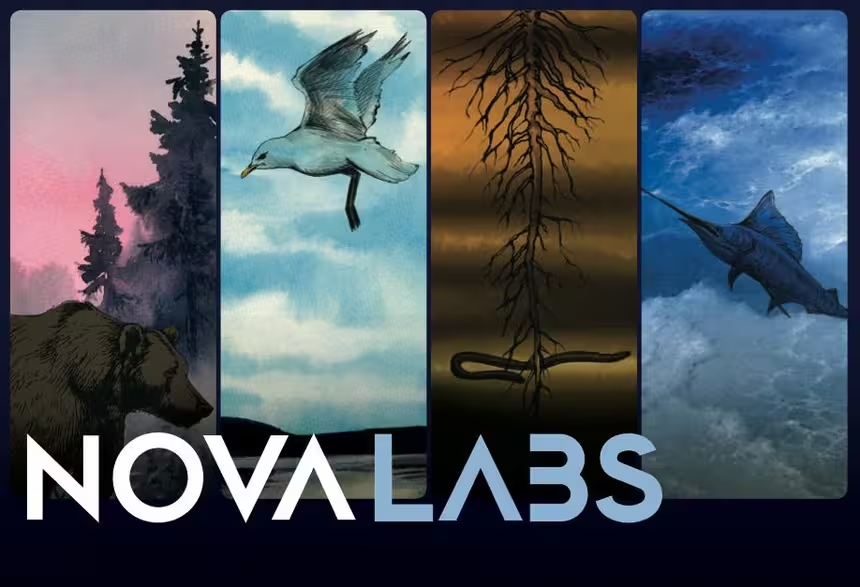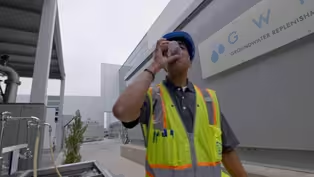
How Coating Roads Could Help Beat the Heat
Clip: Season 50 Episode 5 | 1m 48sVideo has Closed Captions
A pilot program in Phoenix, Arizona aims to cool the city by making the ground less hot.
Concrete and asphalt make cities hotter, because they absorb the sun’s energy and re-radiate it as heat, even well into the night.
Problems playing video? | Closed Captioning Feedback
Problems playing video? | Closed Captioning Feedback
National Corporate funding for NOVA is provided by Carlisle Companies and Viking Cruises. Major funding for NOVA is provided by the NOVA Science Trust, the Corporation for Public Broadcasting, and PBS viewers.

How Coating Roads Could Help Beat the Heat
Clip: Season 50 Episode 5 | 1m 48sVideo has Closed Captions
Concrete and asphalt make cities hotter, because they absorb the sun’s energy and re-radiate it as heat, even well into the night.
Problems playing video? | Closed Captioning Feedback
How to Watch NOVA
NOVA is available to stream on pbs.org and the free PBS App, available on iPhone, Apple TV, Android TV, Android smartphones, Amazon Fire TV, Amazon Fire Tablet, Roku, Samsung Smart TV, and Vizio.
Buy Now

NOVA Labs
NOVA Labs is a free digital platform that engages teens and lifelong learners in games and interactives that foster authentic scientific exploration. Participants take part in real-world investigations by visualizing, analyzing, and playing with the same data that scientists use.Providing Support for PBS.org
Learn Moreabout PBS online sponsorship(upbeat music) - [Narrator] Phoenix, Arizona.
With little vegetation to begin with, the city is even hotter than the desert that surrounds it.
So, they must find a way to cool the city.
- Almost every summer, we have 100 days or more over 100 degrees.
And regularly each summer, we're exceeding 110 degrees.
Anytime we can find hot ground and make it less hot, that will produce a cooling benefit with respect to the air temperature.
- [Narrator] The idea is simple.
Recoat the roads with a special sealant that will reflect about 35% of the sun's energy, which means less energy is absorbed by the asphalt and re-radiated as heat.
(light music) In 2020, the city launched a pilot program to cover 36 miles of roads in eight neighborhoods.
- So, we're going to take a reading here with our infrared thermometer and we've got... - [Narrator] But does it work?
Heat-sensitive images taken from a helicopter reveal a striking difference.
The more reflective surface is as much as 16 degrees cooler.
And an MIT study projects that it could lower the average temperature of some cities by two and a half degrees.
- Now we are seeing new approaches, which are really exciting for cities all across the country.
We could wind up with a city of the future that's cooler than the one we have today.
- We can substantially cool down cities.
In a relatively quick period of time without major expenditures.
And so that's really good news.
How Extreme Heat Overwhelms the Human Body
Video has Closed Captions
Clip: S50 Ep5 | 1m 26s | When it comes to extreme weather, heat can be a “silent killer.” (1m 26s)
How Sewage Becomes Drinking Water
Video has Closed Captions
Clip: S50 Ep5 | 2m 51s | How do you make wastewater drinkable? It starts at the sewage treatment plant. (2m 51s)
Hurricanes Are Getting More Destructive
Video has Closed Captions
Clip: S50 Ep5 | 4m 15s | Recent hurricanes blow away records for destruction, costing over a trillion dollars in 20 years. (4m 15s)
Video has Closed Captions
Preview: S50 Ep5 | 30s | Americans use ancient wisdom and new technology to fight extreme weather. (30s)
Providing Support for PBS.org
Learn Moreabout PBS online sponsorship
- Science and Nature

Capturing the splendor of the natural world, from the African plains to the Antarctic ice.

- Science and Nature

Learn how centuries of knowledge helped our ancestors understand the mysteries of space.












Support for PBS provided by:
National Corporate funding for NOVA is provided by Carlisle Companies and Viking Cruises. Major funding for NOVA is provided by the NOVA Science Trust, the Corporation for Public Broadcasting, and PBS viewers.





